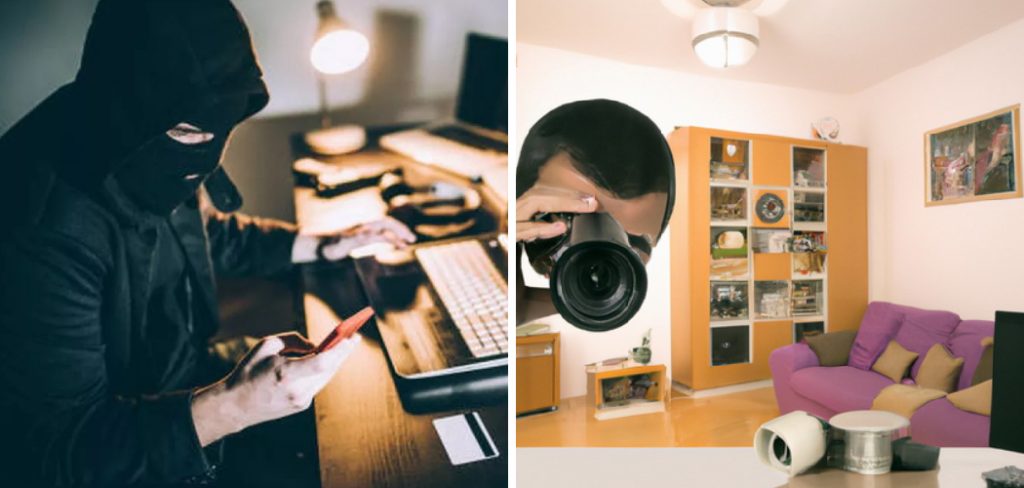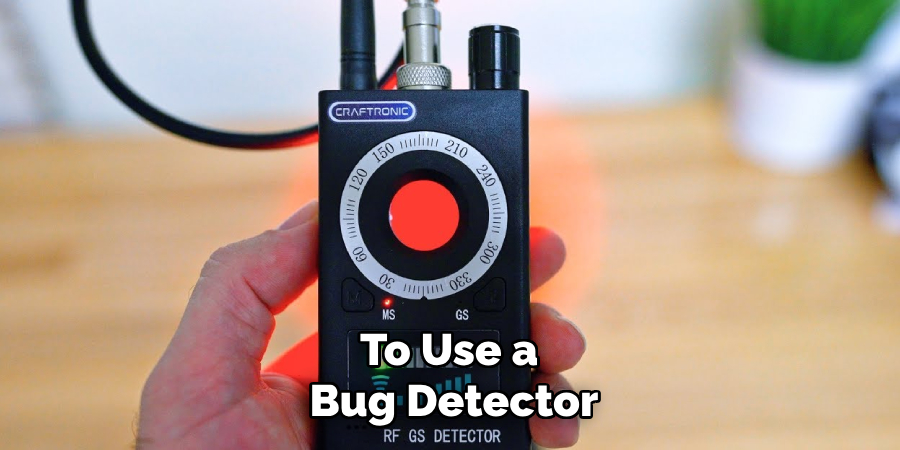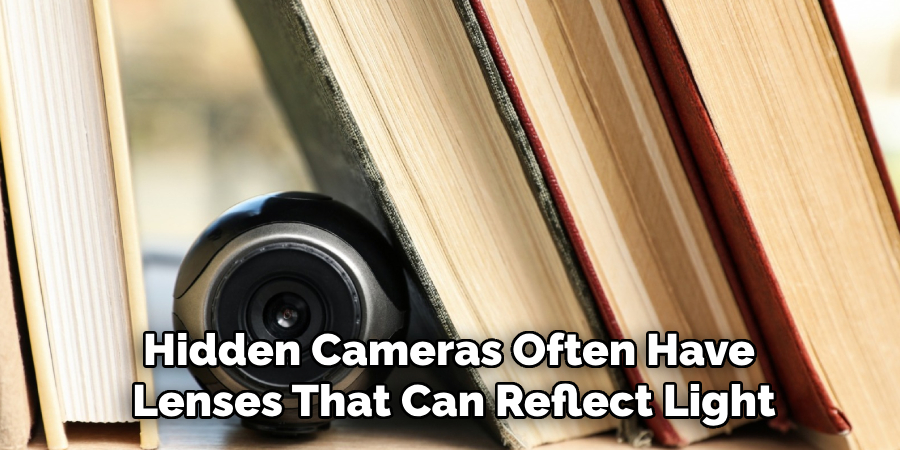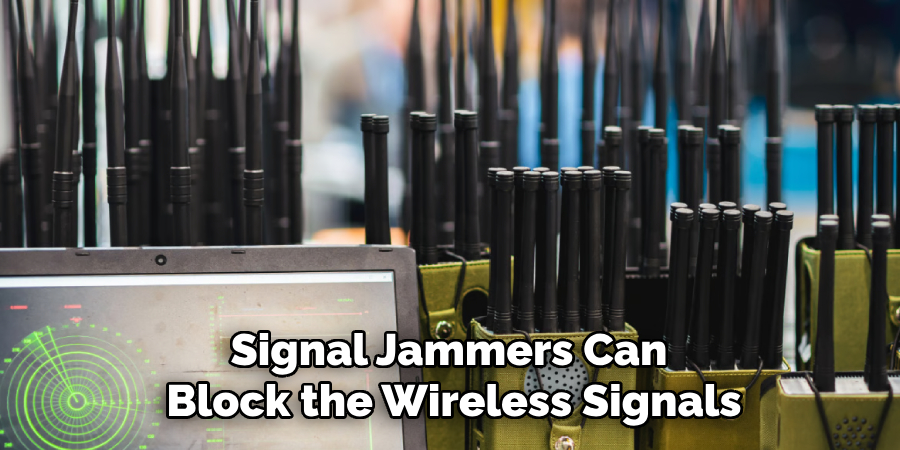Detecting someone spying on you in your home is unsettling but knowing how to catch someone spying on you in your home. This guide explores effective methods to uncover covert surveillance and protect your privacy. From conducting thorough inspections for hidden cameras and listening devices to observing unusual behavior and monitoring electronic devices, each step empowers you to detect potential spying activities.

Understanding the legal implications and respecting privacy laws while gathering evidence are emphasized. By being vigilant and proactive, individuals can safeguard their personal space and take appropriate action to address any breaches of privacy. This article equips readers with practical knowledge and strategies to ensure their home remains a secure and private environment free from unauthorized surveillance.
Understanding Spy Methods
To effectively counter surveillance, it’s essential to understand the methods used by those who might be spying on you. Spies may employ a variety of techniques, ranging from simple to highly sophisticated. Common tools include hidden cameras, which can be concealed in everyday objects like smoke detectors, picture frames, or even light bulbs. Listening devices, otherwise known as bugs, can be discreetly placed in phone handsets, electrical outlets, or behind wall panels.
Additionally, modern spying tactics often involve the use of software to monitor digital communication, track internet activity, and access personal data on electronic devices such as smartphones and computers. Recognizing these tactics empowers you to take the necessary steps to protect yourself and secure your home from prying eyes.
Types of Surveillance Devices
Surveillance devices come in many forms, each designed to monitor, record, and sometimes even transmit information without the subject’s knowledge. Understanding these devices is essential for identifying and neutralizing potential threats to your privacy.
- Hidden Cameras: These covert devices can be embedded in everyday objects, such as clocks, smoke detectors, or even stuffed animals. They range from pinhole cameras, which require a small opening to capture images, to more advanced options like wireless cameras that can transmit footage to a remote location.
- Audio Bugs: Listening devices, or bugs, are designed to capture conversations within their range. They can be hidden in telephones, electrical outlets, or behind wall decorations. Some advanced bugs can transmit audio wirelessly, making it difficult to detect them using traditional sweeping methods.
- GPS Trackers: These devices are typically attached to vehicles to monitor movement and location. They can be battery-powered or hardwired into the vehicle’s electrical system. GPS trackers can provide real-time location data to the person conducting the surveillance.
- Keyloggers: These software or hardware devices are used to monitor and record keystrokes on a computer or smartphone. Hardware keyloggers can be inserted into the keyboard cable, while software keyloggers are installed directly onto the device, often without the user’s knowledge.
- Network Monitors: Surveillance can also occur through network monitoring software that tracks internet activity, captures emails, and records online communications. This type of software is often used to monitor digital traffic and can be installed on individual devices or network infrastructure.

By familiarizing yourself with these types of surveillance devices, you can take proactive measures to protect your privacy and ensure that your home remains secure from unauthorized monitoring.
10 Methods How to Catch Someone Spying on You in Your Home
1. Conduct a Thorough Physical Inspection
A comprehensive physical inspection of your home is the first step in detecting any spying devices. Check for unusual or out-of-place objects, especially in areas where you would expect privacy, like bedrooms, bathrooms, and home offices. Look for tiny holes or unusual items in walls, ceilings, and furniture that could hide cameras or microphones. Pay attention to new or unfamiliar items that may have been introduced without your knowledge. Regularly inspecting your home helps you become familiar with your environment and more likely to notice anomalies.
2. Use a Bug Detector
Bug detectors are electronic devices designed to locate hidden cameras and microphones. These detectors can pick up the electromagnetic signals emitted by spying devices. To use a bug detector, slowly scan each room, paying special attention to potential hiding spots like smoke detectors, light fixtures, and electronic devices. Many bug detectors also have visual indicators to help you pinpoint the exact location of hidden devices. Investing in a quality bug detector can provide peace of mind and a practical tool for ongoing surveillance sweeps.

3. Monitor Wireless Signals
Spying devices often rely on wireless signals to transmit data. Monitoring your home’s Wi-Fi network can help you identify unauthorized devices connected to it. Use network scanning tools to list all devices connected to your network and identify any unfamiliar or suspicious ones. Ensure your Wi-Fi network is secure with strong, unique passwords and consider using a network monitoring app to receive alerts about new connections. By regularly monitoring wireless signals, you can detect and address unauthorized surveillance devices quickly.
4. Check for Unusual Sounds or Interference
Hidden microphones can sometimes cause unusual sounds or interference on electronic devices. Pay attention to any unexplained static, buzzing, or clicking noises coming from your phone, television, or radio. These sounds may indicate the presence of a hidden microphone. Additionally, interference with wireless devices, such as reduced Wi-Fi signal strength or Bluetooth connectivity issues, can also be a sign of surveillance equipment. Being alert to these auditory and technical clues can help you identify and locate spying devices.
5. Inspect Electronic Devices
Spying equipment can be disguised as everyday electronic devices. Inspect your electronics for any signs of tampering, such as loose screws, unfamiliar parts, or changes in performance. Common items that can be modified to include surveillance devices include alarm clocks, USB chargers, and smoke detectors. If you notice any unusual modifications or performance issues, consider having the device professionally inspected or replaced. Regularly checking your electronics helps ensure they have not been compromised.
6. Use a Flashlight to Spot Cameras
Hidden cameras often have lenses that can reflect light. In a dark room, use a flashlight to slowly scan the area, focusing on places where a camera might be concealed, such as vents, shelves, and decorative items. Look for any reflections or glints that could indicate a camera lens. This method is particularly effective in spotting cameras hidden behind transparent materials or in low-light conditions. Practicing this technique can help you become more adept at spotting hidden surveillance equipment.

7. Monitor Your Home’s Electrical Outlets
Spying devices require power to operate, and many are plugged into electrical outlets. Monitor your outlets for any unusual devices or adapters that you did not install. Pay attention to any increase in your electricity bill, which could indicate the presence of additional devices consuming power. Unplug any suspicious devices and observe if there are any changes in your home’s electrical usage or performance. Keeping track of your electrical outlets helps ensure they are not being used to power spying equipment.
8. Check for Signs of Physical Tampering
Physical tampering with locks, doors, windows, or electronic devices can indicate someone has been in your home without your permission. Look for scratches, marks, or damage around locks and entry points. Pay attention to any changes in your belongings, such as moved furniture, open drawers, or misplaced items. If you suspect tampering, consider changing your locks and installing security cameras to monitor for future unauthorized access. Being vigilant about physical signs of tampering helps protect your home from intruders.
9. Use Signal Jammers
Signal jammers can block the wireless signals used by spying devices to transmit data. These devices can create a secure area by preventing the operation of wireless cameras and microphones within a specific range. Use signal jammers in sensitive areas where privacy is most important, such as bedrooms and home offices. Be aware of the legal restrictions and potential interference with other wireless devices when using signal jammers. Employing signal jammers provides an additional layer of security against electronic surveillance.

10. Consult a Professional Security Expert
If you suspect that someone is spying on you and cannot find any devices using the above methods, consulting a professional security expert may be necessary. Security experts have specialized tools and training to detect and remove hidden surveillance equipment. They can also provide advice on improving your home security and preventing future incidents. Hiring a professional can offer peace of mind and ensure that your home is thoroughly checked for any spying devices.
Conclusion
Catching someone spying on you in your home requires a combination of vigilance, practical tools, and professional assistance. By conducting thorough inspections, using bug detectors, monitoring wireless signals, and employing signal jammers, you can effectively detect and prevent unauthorized surveillance. Regularly checking for signs of tampering, inspecting electronic devices, and consulting security experts further enhance your ability to protect your privacy.
Taking these proactive steps ensures that your home remains a safe and private sanctuary. Now that you know how to catch someone spying on you in your home. While it does take a few steps each time, hopefully now you understand the process and why it’s worth taking the extra step to make sure your floor is properly cared for. So don’t wait any longer, take action today!
About
Safety Fic is a distinguished figure in the world of Diy design, with a decade of expertise creating innovative and sustainable Diy solutions. His professional focus lies in merging traditional craftsmanship with modern manufacturing techniques, fostering designs that are both practical and environmentally conscious. As the author of diy, Safety Fic delves into the art and science of Safety Fic-making, inspiring artisans and industry professionals alike.
Education RMIT University
(Melbourne, Australia) Associate Degree in Design (Safety Fic) Focus on sustainable design, industry-driven projects, and practical craftsmanship. Gained hands-on experience with traditional and digital manufacturing tools, such as CAD and CNC software.
Nottingham Trent University
(United Kingdom) Bachelor’s in diyfastly.com and Product Design (Honors) Specialized in product design with a focus on blending creativity with production techniques. Participated in industry projects, working with companies like John Lewis and Vitsoe to gain real-world insights.
Publications and Impact
In diy, Safety Fic his insights on indoor design processes, materials, and strategies for efficient production. His writing bridges the gap between artisan knowledge and modern industry needs, making it a must-read for both budding designers and seasoned professionals.
